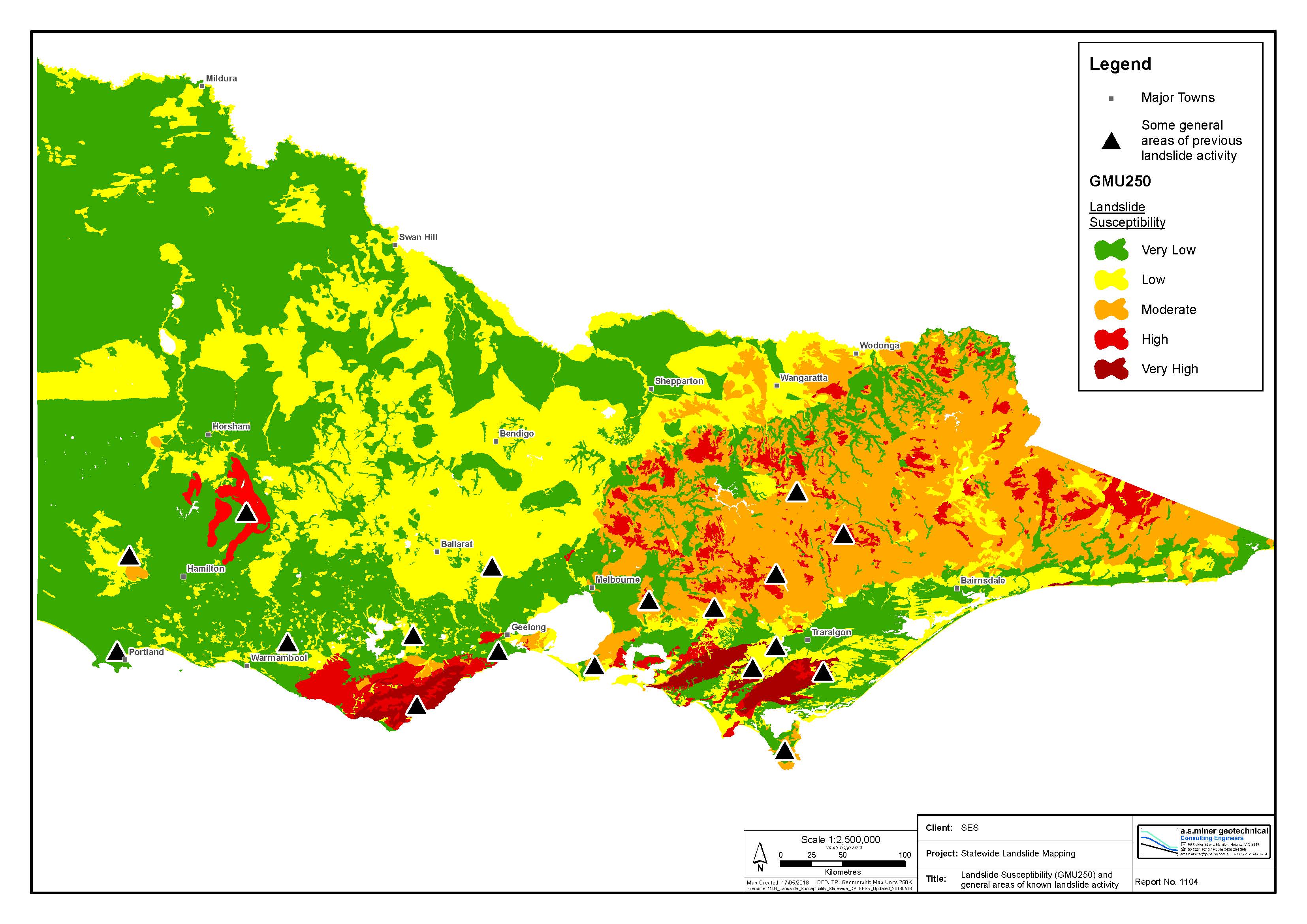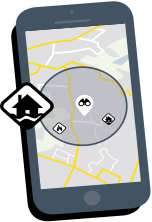Landslides happen often in Victoria. Large landslides are most common after bushfires or flash flooding.
Landslides in Victoria
Head to the Landslide - Take action and stay safe page to know what to do when a landslide occurs.
Information about landslides
Over 180 landslides occurred along the length of the Great Ocean Road in 2016, and over 190 landslides within the Grampians National Park in 2011. Both of these events resulted in significant impacts on public infrastructure, tourism and the economy.
The map below is a guide of the general areas across Victoria where there has been previous landslide activity. Use the legend to determine the risk in your area.

Report changes in the land
If you notice considerable changes to the landscape that show land is moving, immediately contact:
-
The landowner (if on private property).
-
The road authority (if on the roads).
-
Local government (if on public property).
Landslides after bushfires
Bushfires can have long-lasting impacts on the natural environment, increasing the dangers from floods and storms, and the chance of landslides:
-
Plants and tree roots help to stop landslides from happening by absorbing water and holding the ground together. After bushfires, rain and the loss of plants and roots can make the ground soft and heavy, leading to a greater chance of landslides.
-
Landslides can carry debris such as boulders and trees downhill, and cause serious damage to buildings.
-
They can be extremely dangerous to anyone on or below the affected area.
-
The risk of a landslide occurring in a burnt area depends on how steep the land is, the number of remaining trees to support the land, the soil composition, and the structure of the rocks below the surface







